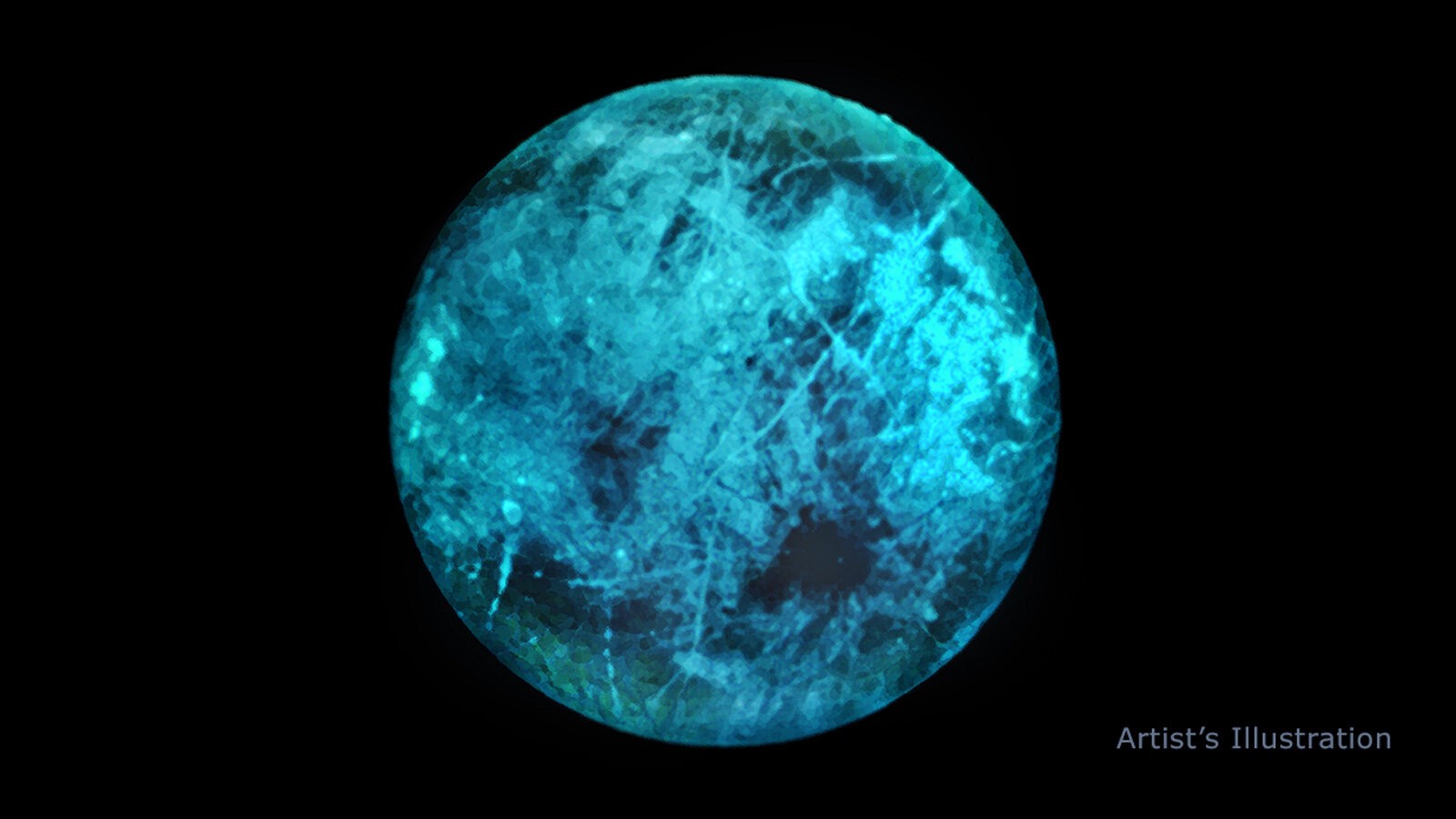A study suggests that under the influence of Jupiter, the moon Europa could begin to glow in the dark. This work could allow us to better understand the composition of its surface, but also what is hidden below.
Europe is a prime candidate for the search for extraterrestrial life, for several reasons. Jupiter's moon would harbor a salty underground ocean under several kilometers of ice , Firstly. It is also possible that this water is in contact with the rocky core of the moon, which would make possible a variety of complex chemical reactions, which could lead to the appearance of life. Finally, another important point:Europe is geologically active. In other words, subterranean life (if it exists at all) could regularly be found on the surface.
A lab experiment suggests that this Galilean moon displays a strange new property:it could glow in the dark. Details of the study are published in the journal Nature Astronomy .
Previous observations suggest that the surface of Europa may consist of a mixture of ice and salts commonly known on Earth such as magnesium sulfate (Epsom salt) and sodium chloride (table salt).
As part of their work, Murthy Gudipati and his team at NASA's Jet Propulsion Laboratory conducted experiments to determine how these materials might react to Jupiter's magnetic field, the most powerful in the Solar System after that of the Sun.
Jupiter's magnetosphere forms an invisible flat disk up to twelve million kilometers wide , much larger than the roughly million-mile-wide orbit of Europe. Because this field accelerates charged particles, Europa finds itself constantly bombarded by high-energy electrons that would kill a human being in seconds.
These experiments then demonstrated that the irradiated ice in which the various salts are incorporated began to glow in the dark . The emission was in visible light, with wavelengths sometimes showing green lights, sometimes blue lights.
It should be remembered that these experiments were conducted in the laboratory. Also, it is not certain that the moon can really shine when it is not exposed to the Sun. On the other hand, if this is the case, this work could be used to determine with precision the composition of its surface.
Indeed, in the context of this work, the intensity and color of the glow depended on the composition of the molecules present in the ice. For example, common salts such as sodium chloride and carbonate minerals gave off almost no glow. Conversely, Espom salts (Epsomite, consisting of magnesium sulfate heptahydrate) enhanced emissions.

Note that these glows are too faint to be seen by terrestrial telescopes. On the other hand, NASA's Europa Clipper mission may be able to detect them. The probe will likely launch in 2024 and arrive in the Jovian system in the early 2030s . Once there, it will remain in orbit around Jupiter for four years, the time to perform 45 low-altitude flybys of Europe (from 2,700 to 25 kilometers above sea level), studying its icy surface with each passage. At low altitude, its wide-field camera should then be capable of capturing the glow of different chemicals lining the surface.
Finally, the researchers point out that if the object of this work was Europa, it is possible that other bodies in the Solar System, including the Galilean moons, Io and Ganymede, may also shine due to Jupiter's intense radiation. If so, this would allow a better characterization of the composition of their respective surfaces.